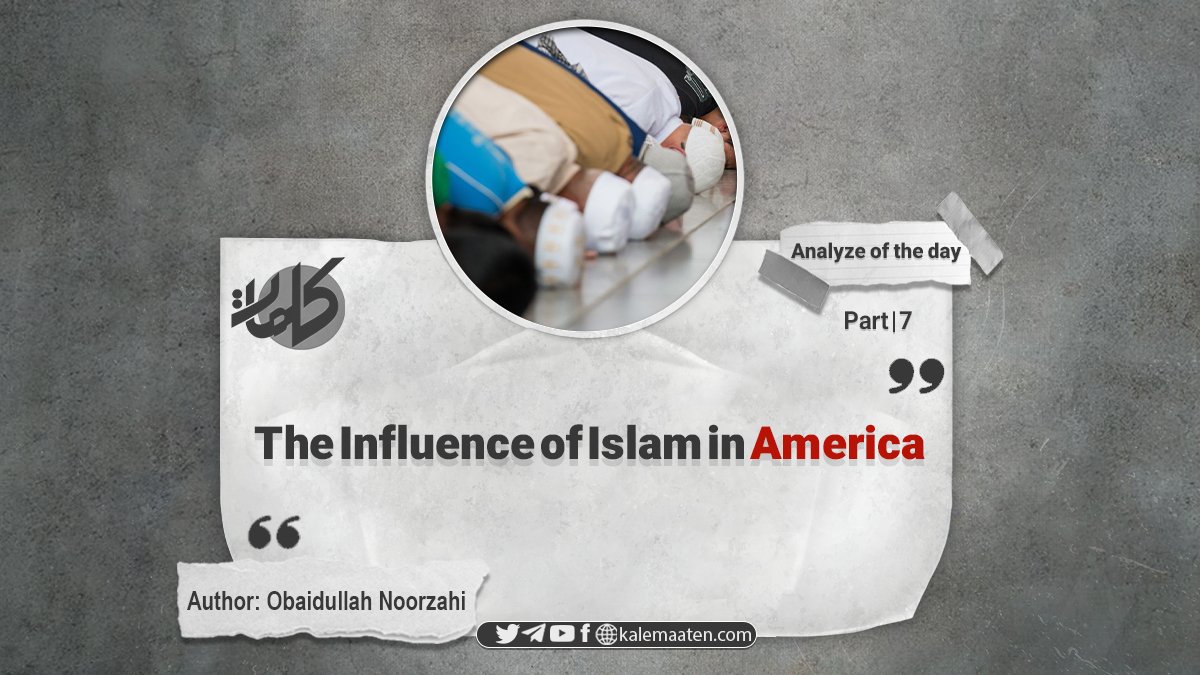
Author: Obaidullah Noorzahi
The Influence of Islam in America (Part 7)
Jamaica
The Governorate of Jamaica is located in the northern Caribbean Sea and the West Indies, covering an area of 10,991 square kilometers. The country became independent in 1962, its capital being Kingston, and it consists of 14 parishes. The population is approximately 2.3 million, predominantly Black, with many identifying as Protestant. The remaining population includes Catholics and Muslims. Jamaica is the largest producer and exporter of bauxite in the world. Despite its rich reserves and abundant wealth, the people live in poverty and hardship under pressure from the United States and other powerful nations.
The Muslims in Jamaica are primarily descendants of Indian workers who were brought to the island during British rule from 1844 to 1912. There are no known descendants of Muslims who arrived with the Spanish colonizers. Some of the descendants of the Africans brought to Jamaica during slavery were likely Muslims. Currently, Jamaica has about 20,000 Muslims, largely unified in two groups in the famous city of Spanish Town. The ethnic origins of Jamaican Muslims are predominantly African and Indian.
Dominican Republic
The Dominican Republic, located in the Greater Antilles, spans an area of 48,734 square kilometers and has a population of approximately 680,000. Most of the population is of mixed race, including both White and Black individuals, with the majority being Catholic. The island of Hispaniola, which is part of this republic, was colonized by Spain in the late 15th century, bringing a number of Andalusian Muslims to the island. However, these Muslims converted to Catholicism under pressure and persecution. The current Muslim population in the Dominican Republic is approximately 7,000 and is primarily of African origin.
Republic of Cuba
Cuba is located in the northwest Caribbean Sea, south of Florida, USA, covering 110,860 square kilometers. It has 14 provinces, and its capital is Havana. Of its 10.5 million inhabitants, 75% are White, with the remainder of mixed race (Black and White). The majority are Catholic. Since 1511, when the Spanish colonized Cuba, some Andalusian Muslims managed to settle there, but due to significant pressure from Catholics and the brutal suppression by church authorities, many were killed or abandoned their faith. As the indigenous population declined, the Spanish brought African slaves to Cuba, including many Muslims who kept their religion secret due to oppressive conditions. The past pressures from colonial rule and current Marxist governance have hindered the growth of Islam in this region, leaving about 2,000 Muslims currently residing in Cuba.
Haiti
The Republic of Haiti, with an area of 27,401 square kilometers, is located in the West Indies on the western part of the island of Hispaniola. Haiti is the poorest country in the Western Hemisphere. Although it gained independence in 1804, the ratification of the constitution was delayed due to a lifetime dictatorship, causing great suffering for the people.
Haiti consists of 6 departments, with Port-au-Prince as its capital. It has a population of 5.5 million, predominantly Black with a significant mixed-race minority. Most of the population identifies as Catholic, although a notable number of Muslims reside there. In 1960, Haiti had about 30,000 Muslims, but political repression has reduced their numbers. One significant historical event in Haiti was the rebellion of enslaved Blacks against French colonizers, including the movement led by Mackendal, a Black Muslim, which occurred in 1758. Although Mackendal achieved some successes in his struggles, he was ultimately defeated and executed by French forces. In recent years, there has been a notable trend of returning to Islam among the Black population.
Suriname
The Republic of Suriname is located in northern South America on the Atlantic Ocean, covering an area of 163,820 square kilometers. Its highlands are mostly in the central regions, and due to its tropical location, it has a hot and humid climate.
Suriname is divided into 9 districts, with Paramaribo as its capital. Approximately 30% of the population is of Indian origin, with the remainder being of African, Javanese, European, and other origins. Suriname has the highest percentage of Muslims of any country in the Americas. The rest of the population primarily follows Christian religions (Catholic and Protestant) and Hinduism, and the total population of Suriname is around 443,000.
The Netherlands conquered Suriname in 1616, and its colonial rule lasted 359 years until independence in 1975. Despite its small size, Suriname produces 10% of the world’s bauxite. The Dutch brought African slaves to work in sugarcane fields from the mid-17th century, many of whom were Muslims. Although a significant number of these people abandoned Islam under adverse conditions, some managed to preserve their Islamic identity in secret.
In 1863, when slavery was abolished, the Dutch faced shortages of laborers. To exploit the land further, they brought workers from various regions of Asia, especially Java and India, with the majority being Muslim. By 1965, Muslims in Suriname numbered 80,000, constituting 25% of the population. Current estimates place the Muslim population at about 160,000, with approximately 100,000 of Javanese origin. Factors like the arrival of Muslim immigrants, natural population growth, and conversions to Islam among others have contributed to the increase in the number of Muslims.
The first mosque in Suriname was built in 1932 in Paramaribo. Despite racial diversity and sectarian differences, Muslims have maintained a significant influence in the political and administrative spheres of the country. As of 1973, 2 out of 13 ministers and 8 out of 39 representatives in parliament were Muslims. The Islamic Council of Suriname organizes Muslims, and although the government acknowledges their affairs, it often underrepresents their numbers in statistics. “Anwarlal,” a government official in charge of Muslim affairs in Suriname, stated that the number of Muslims in the country is 120,000. Suriname has approximately 200 mosques, 6 Islamic schools, and two orphanages for Muslim children. Each mosque has special schools for teaching Islamic principles, Arabic, and Urdu. The government financially supports these schools and institutions.
On Suriname’s official radio and television, Muslims have designated time slots for broadcasting religious programs. However, Christian missionary efforts, backed by substantial financial resources and welfare promises, have contributed to some African Muslim families converting to Christianity. The Suriname Muslim Council is actively addressing this issue by providing welfare and health facilities for poorer families to prevent further losses.
Continues…


